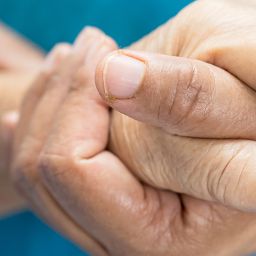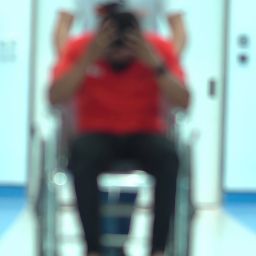Recovering from an injury, surgery, or a chronic condition can be a challenging journey. However, establishing a personalized daily routine can significantly accelerate your rehabilitation and recovery process. It’s not merely about time management; it’s about creating a consistent structure that promotes activity and aligns with your unique physical needs. This article will guide you through the steps of building a tailored daily routine to optimize your mental health, behavioral health, and overall well-being during your time at a rehab center. Remember, consistency is the key. By consistently following your customized daily plan, you’ll steadily gain momentum and make progress toward your recovery targets.
Understanding Your Body’s Needs: A Foundation for Rehabilitation and Recovery
Before embarking on a personalized daily routine, it’s essential to gain a comprehensive understanding of your body’s unique requirements. Consulting with a healthcare professional is paramount to accurately assess your condition and receive tailored recommendations. Consider the following pivotal factors:
- Nature of Injury or Illness: The type and severity of your condition will significantly influence the appropriate exercises and activities. For instance, a sprained ankle may necessitate weight-bearing restrictions, while a shoulder injury might require range-of-motion exercises.
- Physical Limitations: Be mindful of any restrictions or limitations that may affect your mobility or strength. These may include pain, swelling, or reduced flexibility. Recognizing these limitations will enable you to create a routine that is both challenging and safe.
- Overall Health: Consider your general health status, including any underlying conditions that might impact your recovery. Factors such as diabetes, heart disease, or respiratory issues may necessitate modifications to your routine.
Benefits of a Structured Routine: Nurturing Physical and Mental Well-being
A personalized daily routine can offer numerous benefits during your rehabilitation and recovery journey. By establishing a structured approach, you can effectively nurture both your physical and mental well-being.
Physical Benefits
- Regaining Strength, Flexibility, and Mobility: A well-designed routine can help you gradually rebuild your strength, improve your flexibility, and restore your mobility. By consistently engaging in targeted exercises, you can effectively address the specific needs of your condition.
- Avoiding Overexertion: A structured routine ensures that your body receives the appropriate amount of activity without overwhelming it. This prevents setbacks and promotes optimal healing.
Mental and Emotional Benefits
- Reducing Anxiety: Rehabilitation can often be a source of stress and anxiety. A personalized daily routine provides a sense of structure and predictability, which can help alleviate these feelings. Knowing what to expect each day can reduce uncertainty and promote a sense of calm.
- Boosting Motivation: Seeing measurable progress can significantly enhance your motivation during the rehabilitation process. A structured routine allows you to track your achievements and celebrate your milestones, providing a positive reinforcement loop.
By incorporating a personalized daily routine into your rehabilitation and recovery journey, you can experience the transformative benefits of a structured approach. It’s a valuable resource that can aid your physical recovery, boost your mental health, and improve your overall quality of life.
Steps to Building Your Personalized Daily Routine
Assess Your Recovery Goals
The initial step in creating a personalized daily routine is to clearly define your rehabilitation and recovery objectives. What do you hope to achieve? Are you aiming to reduce pain, enhance mobility, or increase muscle strength? Identifying your specific goals will serve as a guiding compass, directing the activities and rest periods you incorporate into your routine.
Consult with Medical Professionals
Before embarking on any new routine, it’s imperative to seek guidance from qualified medical professionals. Your doctor or physical therapist can provide valuable insights into your condition and recommend appropriate activities. A tailored exercise and rest plan, designed with your specific needs in mind, will ensure that you’re on the right track to a successful recovery.
Incorporate Rest and Activity
A balanced rehabilitation and recovery routine necessitates a harmonious blend of activity and rest. Excessive rest can hinder progress, while overexertion may lead to setbacks. Finding the optimal balance is crucial for optimizing your healing process.
Track Your Progress
To monitor your progress and make informed adjustments to your routine, consider utilizing a journal or a dedicated app. By tracking your achievements and challenges, you can identify what works effectively and what may need modification. This ongoing assessment will help you stay motivated and ensure that your routine remains aligned with your evolving needs.
Integrating Nutrition for Recovery
Nutrients Essential for Healing
A healthy diet can help your body heal more effectively. Certain nutrients play a pivotal role in supporting the repair and regeneration of tissues. Proteins, in particular, are essential for rebuilding muscle and connective tissue. Vitamins C and D are crucial for maintaining strong bones and healthy skin.
Creating a Balanced Meal Plan
A personalized daily routine should include a carefully planned meal plan that provides the necessary nutrients to fuel your recovery. Prioritize lean proteins, whole grains, and a variety of colorful vegetables. By incorporating these nutrient-dense foods into your diet, you can optimize your body’s ability to heal and rebuild.
The Importance of Mental Health in Rehabilitation
Rehabilitation and recovery extend beyond physical healing; they also encompass mental health and behavioral health. During this challenging period, it’s crucial to address your emotional well-being.
Incorporating Mindfulness Practices
Mindfulness practices, such as meditation or deep breathing exercises, can be powerful tools for managing stress and anxiety. These techniques help you stay present and focused on your recovery goals, promoting a sense of calm and inner peace.
Managing Stress and Anxiety During Recovery
It’s normal to experience feelings of anxiety or frustration during the recovery process. Recognizing and addressing these emotions is a vital component of your overall well-being. Consider journaling or seeking the support of a therapist to help manage stress and develop healthy coping mechanisms.
Setting a Realistic Timeline for Recovery
Understanding the Stages of Healing
Every rehabilitation and recovery journey is a unique process, characterized by distinct stages. The initial phase often involves rest and recovery, allowing your body to heal and repair. As your body starts to heal, you can slowly add activities to get stronger and move more easily. The ultimate goal is to achieve full rehabilitation and return to your previous level of function.
Creating Achievable Milestones
Rather than fixating on the distant goal of complete recovery, it’s more beneficial to focus on setting small, attainable milestones. These intermediate achievements can provide a sense of accomplishment and motivation as you progress. Celebrate each victory along the way, recognizing that every step forward brings you closer to your ultimate goal.
Avoiding Burnout: The Balance Between Rest and Activity
Signs You’re Pushing Too Hard
Pushing yourself too hard can slow down your healing process. Pay close attention to your body’s signals and watch for signs of overexertion, such as increased pain, fatigue, or a lack of progress. These indicators suggest that you may need to reduce your activity level and prioritize rest.
How to Pace Yourself?
Pay attention to your body’s signals and make necessary changes to your plan. If you’re feeling fatigued or experiencing pain, it’s perfectly acceptable to take a break or reduce the intensity of your activities. Remember, rehabilitation and recovery is a marathon, not a sprint. Be patient and persistent to achieve the best results.
Creating a Flexible Routine
Why Flexibility is Key in Recovery
Life is unpredictable, and your rehabilitation and recovery journey may encounter unexpected challenges. A flexible routine allows you to adapt to changing circumstances and maintain your progress.
Adjusting Your Routine Based on Daily Progress
While it’s tempting to accelerate your activities when you’re experiencing rapid progress, it’s important to proceed cautiously. Before making major changes to your plan, always check with your doctor. They can provide expert guidance and ensure that you’re on the right track.
Support Systems in Recovery
The Role of Family and Friends
A strong support network can significantly enhance your rehabilitation and recovery journey. Your loved ones can provide invaluable emotional support, practical assistance, and motivation. Don’t hesitate to lean on your family and friends for encouragement, companionship, or even a helping hand. Whether it’s a ride to physical therapy, a listening ear, or a motivational pep talk, their presence can make a world of difference.
Finding Support Groups and Communities
Talking to others who have gone through similar difficulties can make you feel like you’re not alone and that you’re understood. Numerous online and in-person communities focus on rehabilitation and recovery, providing a platform for sharing experiences, seeking advice, and offering support. Engaging with these communities can foster a sense of camaraderie and provide valuable insights from those who have walked a similar path.
Staying Motivated Through Your Recovery Journey
Celebrating Small Wins
Rehabilitation and recovery can be a challenging process, but staying motivated is essential for achieving your goals. Celebrating small wins along the way can help you maintain a positive outlook and stay focused on your progress.
Dealing with Setbacks
It’s important to remember that rehabilitation and recovery is not always a linear journey. Setbacks may occur, but it’s crucial to remain resilient and avoid self-criticism. When faced with challenges, adjust your routine as needed and keep moving forward. Remember, temporary setbacks won’t last forever, and with persistence, you can overcome them.
Seeking Professional Help?
If you or someone you know needs guidance or help, don’t hesitate to reach out to us. There are many resources available to support you, including mental health professionals, support groups, and online communities. Remember, you’re not alone, and help is available. Take the first step towards feeling better by seeking the support you need.
Conclusion
A personalized daily routine is a cornerstone of successful rehabilitation and recovery. By following a structured plan, consulting with medical professionals, and prioritizing both your physical and mental health, you can create a roadmap to healing. Consistency, flexibility, and a positive mindset are essential components of this journey. Remember, rehabilitation and recovery is a marathon, not a sprint. With dedication and perseverance, you can achieve your goals and reclaim your well-being.















